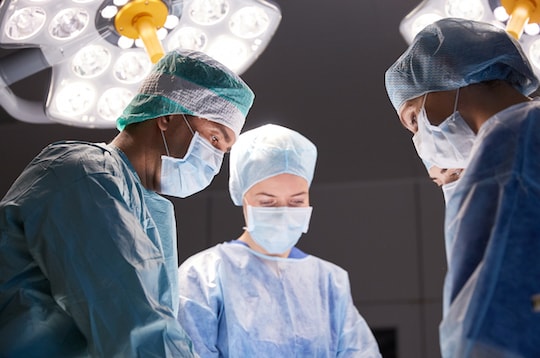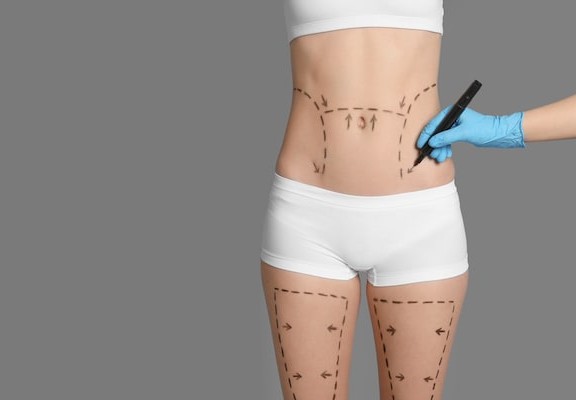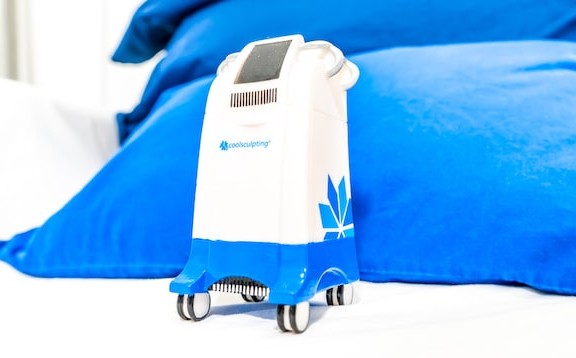 “Awake Liposuction” is a form of tumescent liposuction that involves infiltrating the treatment area with a saline mixture, including a local anesthetic, to swell the fatty layer for easier removal. The fluids allow the surgeon to efficiently remove deeper fat with less bleeding, bruising and skin irregularities while also providing a safer and faster recovery. Since a local anesthetic is used in the treatment area, general anesthesia is not necessary which allows the patient to be awake during the procedure. Although the idea of being awake may seem scary, the lidocaine used during the procedure helps to keep the patient comfortable. Therefore, the patient should feel little to no discomfort. Having the patient awake during liposuction holds certain benefits as the patient becomes an active participant in the procedure. The surgeon can have the patient reposition herself which serves to better sculpt the targeted area. However, many people wonder if “Awake Liposuction” is a good idea or not.
“Awake Liposuction” is a form of tumescent liposuction that involves infiltrating the treatment area with a saline mixture, including a local anesthetic, to swell the fatty layer for easier removal. The fluids allow the surgeon to efficiently remove deeper fat with less bleeding, bruising and skin irregularities while also providing a safer and faster recovery. Since a local anesthetic is used in the treatment area, general anesthesia is not necessary which allows the patient to be awake during the procedure. Although the idea of being awake may seem scary, the lidocaine used during the procedure helps to keep the patient comfortable. Therefore, the patient should feel little to no discomfort. Having the patient awake during liposuction holds certain benefits as the patient becomes an active participant in the procedure. The surgeon can have the patient reposition herself which serves to better sculpt the targeted area. However, many people wonder if “Awake Liposuction” is a good idea or not.
Why “Awake Liposuction” is Risky
Although tumescent liposuction is recommended by some surgeons, many surgeons do not say the same thing about “Awake Liposuction”. Since it does not require anesthesia, many doctors perform this procedure in an office (rather than a surgical facility) because they lack hospital privileges. Additionally, the doctors are providing the service without a team of surgeons, nurses and an anesthesiologist. Having the procedure performed in an office, with minimal assistants certainly cuts the cost down but, it considerably increases the risks. Patients have varied sensitivity to anesthesia which can cause serious complications. Consequently, a trained anesthesiologist should be involved in the treatment plan. In-office settings do not provide the same safety net that being in a surgical facility can provide if complications arise.
Lidocaine toxicity is a risk that can occur during “Awake Liposuction” and it occurs when the surgeon exceeds the recommended guidelines of local anesthesia administered to the patient. Lidocaine is toxic to the body in large doses so it must be diluted and administered properly.
Furthermore, a hospital or an accredited ambulatory surgery center is subject to unbiased 3rd party inspections. Office settings are not subject to the same inspections. There are times the surgery is done with outdated tools and in unsatisfactory conditions. Many of these physicians are amateurs in the cosmetic field and offer low-priced cosmetic surgeries when their background is in general surgery, internal medicine or gynecology. Patients often suffer a traumatic experience and poor results.
When is “Awake Liposuction” Right for You?
When performed under the right circumstances, “Awake Liposuction” can be ideal for some patients. Patients should be in good health and only require the removal of a small amount of liposuction. Anyone considering “Awake Liposuction” should ensure that the surgeon is a board-certified plastic surgeon who is adequately skilled and performs liposuction on a regular basis. Furthermore, the prospective patient should verify that the surgery will take place in an accredited surgical facility with the appropriate assistants.
SP



